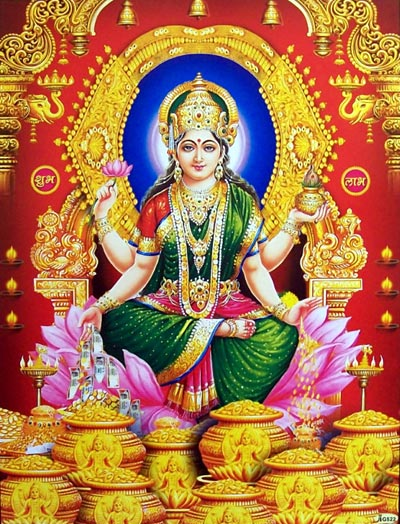Goddess of wealth, prosperity, and fortune in the hindu culture is Maa Lakshmi. The iconography used and her attributes represent high spirituality within her worship. The meaning behind the symbolism of Lakshmi helps bring out the cultural and religious importance of this goddess.
Iconography of Lakshmi
Maa Lakshmi is typically depicted with distinct features and attributes, each laden with symbolism:
Four Arms: Laxshmi is often depicted as having four arms, one holding a lotus flower, another a plate, and the two other arms carry a conch shell and an arrow. These arms represent the four goals of human life: moral, economic prosperity, desire, and liberation.
Lotus: A seated or standing lotus would usually be with lakshmis. The lotus denotes purification in order to acquire riches as an act of pure heart without any impurity.
Coins: There is a money-pouring hand in one of Lakshmi’s hands while the other three indicate that she is a goddess of prosperity. It entails both temporal and timeless valuables.
Abhaya Mudra: Lakshmi’s elevated hand is frequently depicted with her abhaya mudra, meaning unshakeable calmness while securing against terror. Wealth sought after in righteousness secures one’s protection and safety.
Varada Mudra: She stretches her lower right hand with the varada mudra motion signifying fulfillment of desires and benediction. The right hand re-emphasizes that wealth is a god-sent thing, especially in times of honesty.
Red Sari: Lakshmi is commonly represented as a woman in red sari to portray strength and how riches could be a source of transformation. It also symbolizes red as the emotional and vital life force.
Elephants: Some depictions even show elephants sprinkling water on Lakshmi themselves or holding a pot. They represent royalty, power, and wisdom, and their presence shows that richness is not limited.
Alakshmi: In some cases, Lakshmi has a companion known as Alakshmi, who is associated with doom and destitution but dwells at the feet. This comparison reinforces the need to acknowledge temporariness aspect of wealth and its insignificance.
Symbolic Significance
The symbolism of Lakshmi conveys essential teachings and values:
- Prosperity and Spiritual Growth: Lakshmi’s presence on the lotus signifies that material prosperity and spiritual growth can coexist. Wealth, when used for noble purposes, can lead to spiritual enlightenment.
- Ethical Wealth Accumulation: The symbolism of coins and the abhaya mudra underscore the importance of ethical wealth accumulation. Pursuing prosperity with righteousness and integrity is the path to true abundance.
- Generosity and Blessings: Lakshmi’s varada mudra and elephants symbolize her blessings and generosity. It reminds us to share our wealth and extend help to others in need.
- Cycles of Fortune: The juxtaposition of Lakshmi and Alakshmi at her feet reminds us that fortune is cyclical. Wealth and misfortune are not permanent, and humility is key to navigating life’s ups and downs.
The symbolism of Maa Lakshmi serves as a reminder of the importance of pursuing wealth with ethical and moral values, sharing one’s blessings, and recognizing the transient nature of material wealth in the complexity of life.

